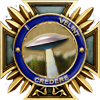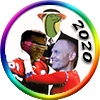 James
James
I'm guessing you inherited most of this. As an advice try to be clearer about the names of entities representing more concrete things. For example PanelShape is a perfect name for that entity, because you can explain it easily, a panel shape has X Y Z property.
If something has a Type, and that type can only be x,y,z that can be represented by a lookup table with a foreign key to it.
If all your data can be separated into "types" then you will have several lookup tables that will be linked to your PannelShape table.
Start thinking into how to group the data. However I think your boss is giving the run around by asking you for the ER diagram, An ER diagram is used for implementation, not for management.
What management needs are Use case diagrams. (I'm going to make 4 up off the top of head with the information you given me)
Start with a problem, what are you trying to solve. pick your most simple case.
Use Case 1
As an employee of the company I need to go to a place, in there i will select the location to where the order product will be delivered, then I will select the measurements, material type, dimensions, type of slit, type of xyz. Then after all this data is collected an order is created and email will get fired to processing so the order can be processed.
Use case 2
As a processor, I need to go to place and review all the pending order, read the materials needed, check them out against inventory and make the widget.
Use case 3
As a shipper i need to track the order, so i need a place to where i can find the order and add to it a corresponding UPS Tracker.
use case 4.
As an inventory manager I need to see how many materials i have left in stock, and what has been my usage on the last week/month. I also need alerts if a materials stock falls behind a certain number, so i can buy more.
Use cases DRIVE the software, we basically are creating software to address them, they are the goal, the endgame. ER diagram is how we implement a solution to them, they come after we have scoped out what we want/need to do.
Start small, you seem very familiar with the business process, so start thinking, how can "the computer help me here? How can i go from 20 keystrokes to make an order, to 10 or even 5 mouse clicks.
Also an order entity is normally separated in the following components
Order table
OrderID
CustomerId
Shipping Information AddressID
Billing Information AddressID
OrderLineItem Table (each one is a line item)
OrderLineItem ID
OrderId
Product ID
Total $
The product ID is the link to the product you make, in your case a panel. (NOTE This is very cookie cutter and you may not need some of them at all).
Again focus on the problem you are trying to solve, write it out; explain to management why is it a problem, and how a computer software can fix it. The rest is the easy part =).
If you are wasting materials, then you need software to help you manage inventory. If orders are getting lost, then you need an order tracking system that fires emails, etc.











